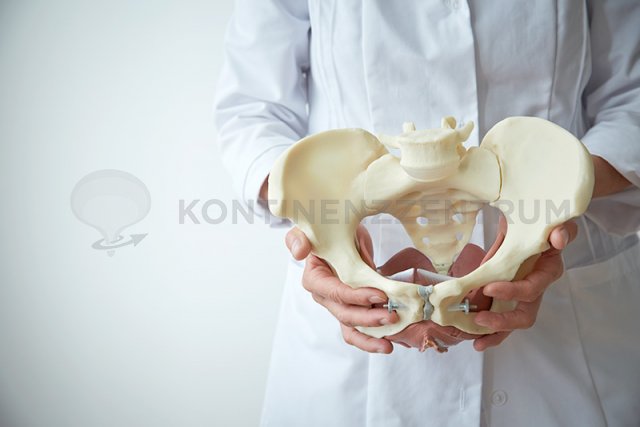Pelvic floor
Pelvic floor training for women, men and children

Conventional pelvic floor training helps men, women and children with pelvic floor weakness, impaired bladder function and bladder weakness/incontinence to improve their control of their pelvic floor muscles and bladder sphincter muscles. Like any muscle in the body, the pelvic floor muscles can be strengthened by targeted exercises.
Long-term pelvic floor therapy
- Targeted muscle control: In the first stage of pelvic floor training, an experienced pelvic floor therapist will teach you how to focus on controlling the right muscle groups.
- Strength and endurance: Then you can perform special exercises to improve the strength and endurance of your pelvic floor muscles in various postures. We will draw up a personalised training plan that takes account of your situation for you to follow at home.
- Pelvic floor training as part of daily life: The third step is training at home and using the pelvic floor techniques you have learnt in everyday situations.
- Recognising pelvic floor tension: Patients who find it difficult or impossible to control their pelvic floor themselves can be shown what it feels like when the pelvic floor is tensing and relaxing, using an electronic probe.
- Individual training plans: The use of a TENS device to apply electrostimulation to the pelvic floor allows patients to follow specific, targeted training plans and improve their strength.
- A complement to conventional pelvic floor training: Functional stimulation of the pelvic floor is, for many patients, a useful addition to conventional pelvic floor training, so that the pelvic floor is finally fit to cope with everyday situations.
Biofeedback therapy for a strong pelvic floor
Biofeedback and electrical stimulation of the pelvic floor muscles are regarded as a complement to conventional pelvic floor training.
Some people do not have sufficient ability to consciously activate their pelvic floor, and need to learn this before training can be successful. In these cases, biofeedback treatment, in which the muscular activity of the pelvic floor is displayed visually, is a useful addition to conventional pelvic floor training.
Biofeedback with ultrasound or video endoscopy for targeted pelvic floor training
The simplest method is to produce an ultrasound image of the urethra, with the correct muscle contraction being shown on the screen so that it can be corrected and increased during the exercises.
Biofeedback training using a probe for training visualisation
There are also special biofeedback training devices in which a probe in the vagina or bowel measures the muscular activity of the pelvic floor muscles and displays it on a scale or on a screen. The device is suitable not only to teach the right technique, but also to monitor its success.
Functional pelvic floor stimulation
Special biofeedback therapy devices can even emit electrical impulses that train the pelvic floor muscles by stimulating the vagina or rectum. This type of stimulation treatment to strengthen the pelvic floor can take several weeks after appropriate instruction, depending on the underlying disorder, and can also be carried out at home with a loaned TENS device.
Benefits of functional pelvic floor stimulation
- Recognising pelvic floor tension: Patients who find it difficult or impossible to control their pelvic floor themselves can be shown what it feels like when the pelvic floor is tensing and relaxing, using an electronic probe.
- Individual training plans: The use of a TENS device to apply electrostimulation to the pelvic floor allows patients to follow specific, targeted training plans and improve their strength.
- A complement to conventional pelvic floor training: Functional stimulation of the pelvic floor is, for many patients, a useful addition to conventional pelvic floor training, so that the pelvic floor is finally fit to cope with everyday situations.
Who can benefit from pelvic floor training
- Children, men and women with incontinence
- Women who have had one or more children and this has weakened their pelvic floor and led to consequences such as incontinence, organ prolapse, etc.
- Women and men with congenital connective tissue disorder leading to pelvic floor weakness, which can cause organ prolapse, bladder disorders and incontinence.
- Children, men and women with difficulty voiding the bladder due to pelvic floor spasms.
- Men with erectile dysfunction. A trained, strong pelvic floor can often help with erection problems.
- Women with difficulty reaching orgasm. Women who find it hard to reach orgasm can in most cases benefit greatly from targeted training of the pelvic floor muscles.
Find out now
Contact us to arrange an appointment so that we can advise you on your personal treatment options.
